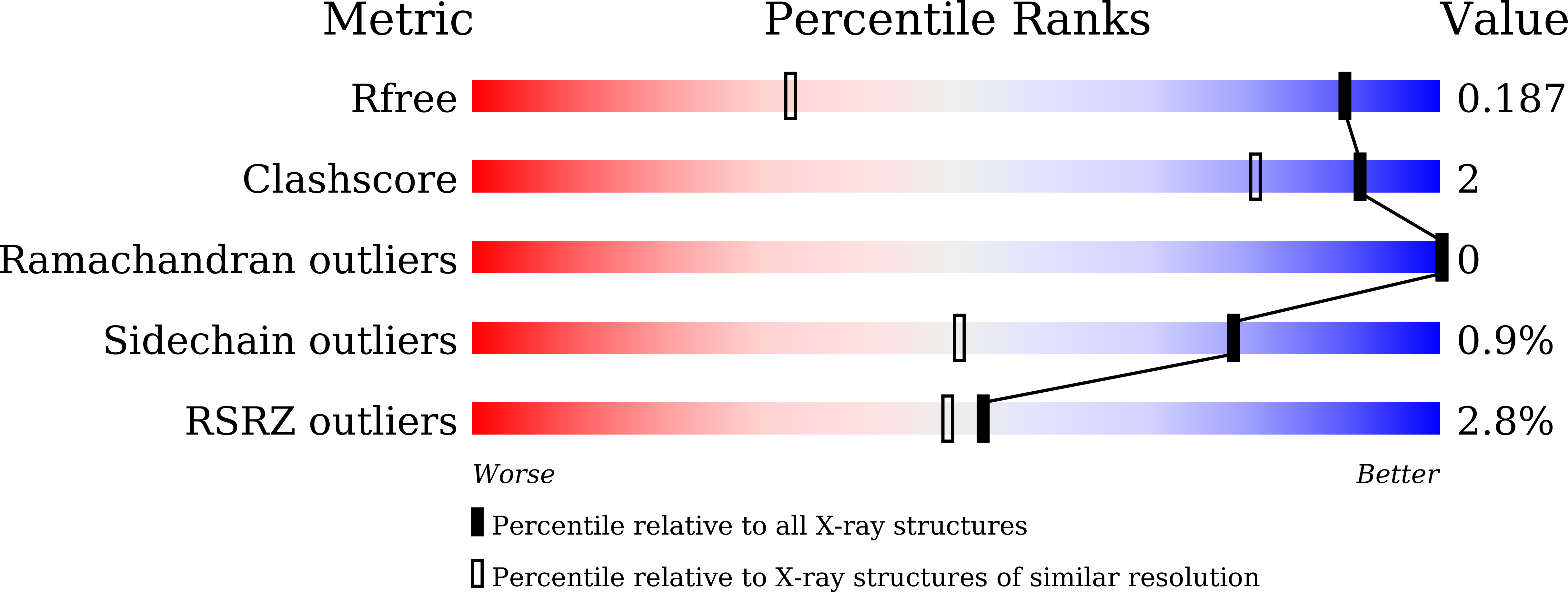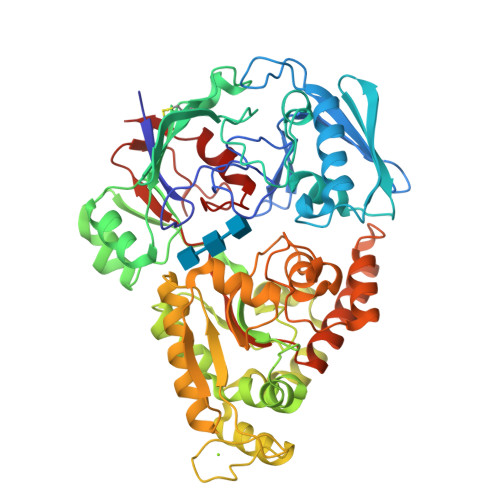Periplasmic chitooligosaccharide-binding protein requires a three-domain organization for substrate translocation.
Ohnuma, T., Tsujii, J., Kataoka, C., Yoshimoto, T., Takeshita, D., Lampela, O., Juffer, A.H., Suginta, W., Fukamizo, T.(2023) Sci Rep 13: 20558-20558
- PubMed: 37996461
- DOI: https://doi.org/10.1038/s41598-023-47253-y
- Primary Citation of Related Structures:
8I5J, 8I5K - PubMed Abstract:
Periplasmic solute-binding proteins (SBPs) specific for chitooligosaccharides, (GlcNAc) n (n = 2, 3, 4, 5 and 6), are involved in the uptake of chitinous nutrients and the negative control of chitin signal transduction in Vibrios. Most translocation processes by SBPs across the inner membrane have been explained thus far by two-domain open/closed mechanism. Here we propose three-domain mechanism of the (GlcNAc) n translocation based on experiments using a recombinant VcCBP, SBP specific for (GlcNAc) n from Vibrio cholerae. X-ray crystal structures of unliganded or (GlcNAc) 3 -liganded VcCBP solved at 1.2-1.6 Å revealed three distinct domains, the Upper1, Upper2 and Lower domains for this protein. Molecular dynamics simulation indicated that the motions of the three domains are independent and that in the (GlcNAc) 3 -liganded state the Upper2/Lower interface fluctuated more intensively, compared to the Upper1/Lower interface. The Upper1/Lower interface bound two GlcNAc residues tightly, while the Upper2/Lower interface appeared to loosen and release the bound sugar molecule. The three-domain mechanism proposed here was fully supported by binding data obtained by thermal unfolding experiments and ITC, and may be applicable to other translocation systems involving SBPs belonging to the same cluster.
Organizational Affiliation:
Department of Advanced Bioscience, Kindai University, 3327-204 Nakamachi, Nara, 631-8505, Japan. ohnumat@nara.kindai.ac.jp.



















